It began with an email requesting help from the County Sheriff’s Office to F.E. Baxter, Co-Founder/Treasurer of Southwest Llama Rescue (SWLR), on October 3. A follow-up call came to me from the Colorado Department of Agriculture, Bureau of Animal Protection Lead Investigator/Coordinator on Thursday October 6. The investigator asked if SWLR could assist with a case where they were serving a warrant and seizing llamas. The estimate was 20 llamas that needed a place to go. Without hesitation, I said, “yes, definitely. I don’t yet know where we will put them, but we will figure it out.” But they weren’t just looking for a commitment, they were ready to go that Sunday, October 9th – the date for the warrant to be served. This was a short notice emergency!
Having a small network in Colorado was lucky and imperative. Robin Benton is my go-to, so I was relieved that she was available. Also, Eric Gustafson, another SWLR volunteer, was quick to take a personal day from his demanding work schedule to help these llamas in need. Between the three of us (and our companions), we could load 20 llamas into our three trailers. I called Ingrid Thompson for a location to temporarily house the llamas. I had met her at another llama roundup earlier this summer. Ingrid and Duane Snader of Cloverleaf Farms West (CFW) agreed without hesitation to take the llamas temporarily. The had some space that we could separate males from females; so, I was so relieved that they volunteered to help us. None of us could have taken in these many llamas! Frank, my husband, was also recruited. He came mainly to keep me in check and to assist with some heavy panel lifting and setup for the llama roundup and his creative, calm, and thoughtful perspective is always a great benefit in the sometimes-chaotic atmosphere of a wild llama rescue.
The field team met 0900 Sunday in the parking lot at 11 Mile office for a briefing. We heard about the owner’s property who was being served – he was not home, gratefully, so there was no confrontation. On the team were State, County, and Park officers. Some were armed for the situation. We all signed a sheet as participants with our contact information. Eric also brought his daughter Lena and her friend Michaela who were very helpful.
The llamas were scattered over more than a mile of open land, with access to hundreds of acres of open space. Most private fencing in the area is relatively low barbed wire, easy for many llamas to jump. We were challenged by the enormous size of the landscape for this roundup effort.
State Animal Control had 10 panels 5.5 ft. high and 12 foot long and had them set up except one side being 4-strand wire fencing that we needed to re-enforce with my panels to prevent escape. Two large males kept trying to come in but with human bodies everywhere, and us trying to set up the panels by the entry to completely enclose their corral, it was chaos. Two adult males and an adolescent male were finally corralled. One of these males was aggressive and would charge and rear up. He did not scream or spit but clicked a lot at the crew. I called him borderline ABS.
I made a comment that the llama people should load these guys which was not meant to insult anyone, but tensions seemed to mount even more, then. The adolescent male then jumped through the fencing back out on the road but we managed to get him back in the property to corral him more securely. We loaded the two males into Eric’s trailer, including Cowboy, the borderline ABS male. The rounding up of the three month-old crias, another adolescent male, and another adult male was stressful as we were on about 10 acres and parts of the fencing was compromised where they could get out, if pressured. Four or five of us tried to do it, but the crias or the other two would squeeze out. I brought out 500 feet of herding tape and finally all nine or so crew worked together to slowly herd the llamas into our large corral. It was a good feeling with everyone working together, for the most part. With everyone’s patience thinning, we did get the five remaining llamas into my trailer successfully. Only two large males, one with barbed wired around him, who I call Tangled, were outside and too spooked to collect.
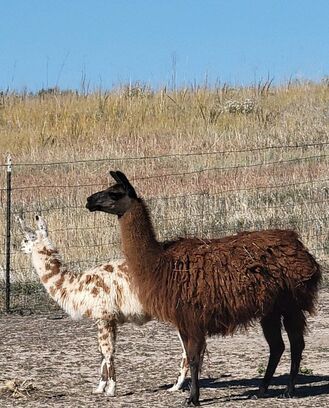 A mother and cria (two of five) rounded up and secured in a pen before we arrived.
A mother and cria (two of five) rounded up and secured in a pen before we arrived. 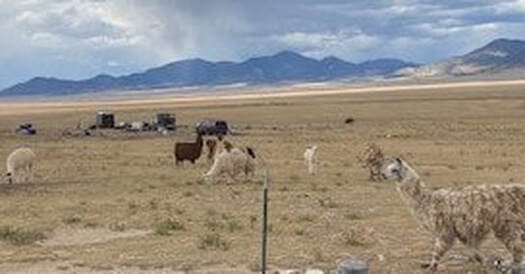
The cost, time, equipment and other resources like feed that went into this rescue was provided by volunteers. We rely on volunteers and donations to make a difference in the lives of these creatures often saving them from starvation as in this case. To contribute to Southwest Llama Rescue to continue our efforts, donations can be made by going to www.southwestllamarescue.org.
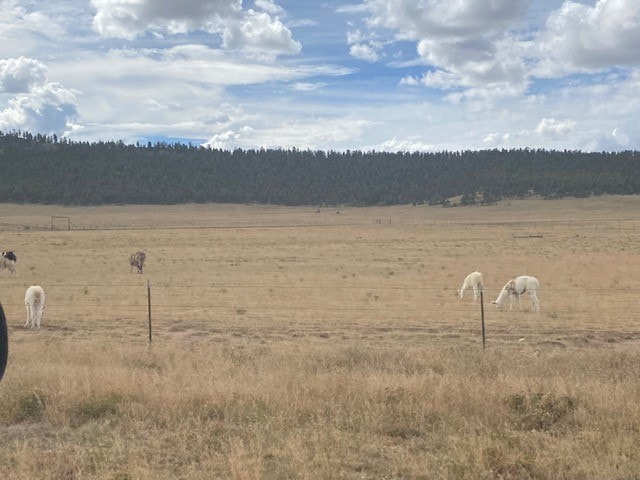
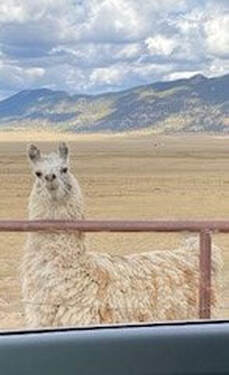
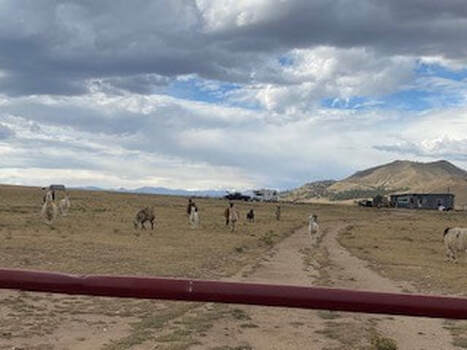
 RSS Feed
RSS Feed